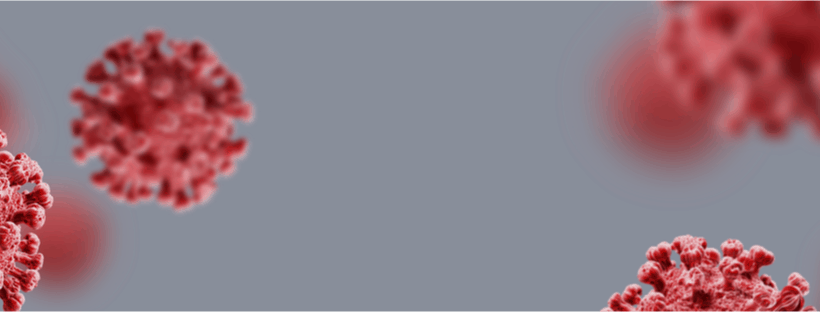September 08, 2021
AMR intervention studies lack diversity and complexity to address AMR. A recent review evaluated 42 unique E. coli antimicrobial resistance (AMR) interventions, the majority of which were implemented in high-income countries (36/42) and targeted the human sector (25/42). The authors cite that most interventions lacked complexity by targeting a low leverage point in the AMR system in the face of the increasingly complex AMR problem. Most studies reported communication between actors and stakeholders, the role of media, and interdisciplinary collaboration as success factors for AMS interventions. In contrast, data quality, access to data analyses, and validity of results were reported as obstacles to addressing AMR. [BMC Infectious Diseases]
Antibiotic stewardship rounds are in need of customization. A cluster-randomized, crossover study at Duke University Hospital investigated the effect of dedicated antibiotic stewardship rounds (ASRs) on antibiotic use (AU) in five intensive care units (ICUs). Overall, AU reduction was 16% in the post-study period; however, this varied across units. The neurology ICU experienced a 28% reduction, while the cardiac surgery ICU only showed a 2% reduction, suggesting that high-resource interventions should be optimized to match unit-specific populations, workflow, and culture. Clinical Infectious Diseases]
Breast cancer screening rates fell during the COVID-19 pandemic. Breast cancer screening rates (BCSRs) among a population of women aged 50 to 74 years visiting 32 community health centers in the United States declined significantly at the beginning of the COVID-19 pandemic. While BCSRs rose by 18% between 2018 and 2019, they fell by 8% between 2019 and 2020 (53.9% to 49.6%), translating into 242 missed breast cancer diagnoses. [Cancer]
Vaccine and chemoprevention offer better protection against malaria. The RTS,S/AS01E malaria vaccine’s protective efficacy wanes off after the first few months. Researchers have suggested that seasonal vaccination could be necessary for better protection. A recent randomized, controlled trial conducted in Mali and Burkina Faso showed that seasonal vaccination was non-inferior to chemoprevention (HR 0.92; 95% CI 0.84 to 1.01) in preventing uncomplicated malaria. In addition, the combination of the vaccine and chemoprevention resulted in a substantially lower incidence of malaria infection and death than either treatment individually. [NEJM]
Revised protocols reduce pediatric vancomycin use in pediatric intensive care units. To address high community rates of methicillin-resistant Staphylococcus aureus (MRSA), the Nationwide Children’s Hospital in Columbus, Ohio, established an intervention to reduce empirical vancomycin use by 30%. There was a substantial reduction in empirical vancomycin use following a set of measures such as education of PICU providers, guidelines, and decision support. Among 1620 PICU patients with suspected community-acquired bacterial infections, empirical vancomycin decreased from a baseline of 73% to 45%. [Pediatrics]
Casirivimab-imdevimab treatment reduces hospitalization rates for mild to moderate COVID-19. Casirivimab and imdevimab are recombinant monoclonal antibodies that block the SARS-CoV-2 virus from entering the cells. Researchers at the Mayo Clinic in the United States assessed casirivimab-imdevimab treatment outcomes among outpatients with mild to moderate COVID-19. In a cohort of 1392 patients, those treated with casirivimab-imdevimab had significantly lower overall hospitalization rates than untreated patients; however, intensive care unit admission rates were the same for both groups. [The Lancet]
A combination of hydroxychloroquine and azithromycin is ineffective as treatment for mild COVID-19. A randomized, double-blinded, placebo-controlled clinical trial evaluated the efficacy of hydroxychloroquine and azithromycin as treatment for early and mild COVID-19 infections. In a cohort of 60 people (36 in the treatment group and 34 in the placebo group), no statistically significant difference was found between the treatment and placebo groups in viral clearance rates within the nine days following treatment. [International Journal of Antimicrobial Agents]
The COVID-19 pandemic is associated with higher depression levels among pregnant women in Wuhan. A cross-sectional analysis evaluated depression, anxiety, and stress symptoms before and during the COVID-19 pandemic among pregnant women in Wuhan. While mild and moderate to severe depression rates among pregnant women increased (OR 1.68; 95% CI 1.16 to 2.44) during the pandemic, stress levels decreased (OR 0.42; 95% CI 0.29 to 0.61). Factors associated with a lower risk for depression were pre-pregnancy obesity and high educational levels. [Journal of Psychosomatic Research]
Fungal co-infection in older COVID-19 patients is a strong predictor of mortality. Researchers from the European Confederation of Medical Mycology investigated the prevalence of COVID-19 associated pulmonary aspergillosis (CAPA), a complication that has emerged in critically ill COVID-19 patients. CAPA was diagnosed a median of 8 days after ICU admission, typically in older patients (adjusted HR of 1.04 per year) with invasive respiratory support (HR: 3.4) and receiving tocilizumab (HR: 2.45). Median CAPA prevalence per center was 10.7% and was associated with a significantly lower ICU survival rate (29% vs. 57%). [Clinical Microbiological Infections]
Photo: shutterstock













